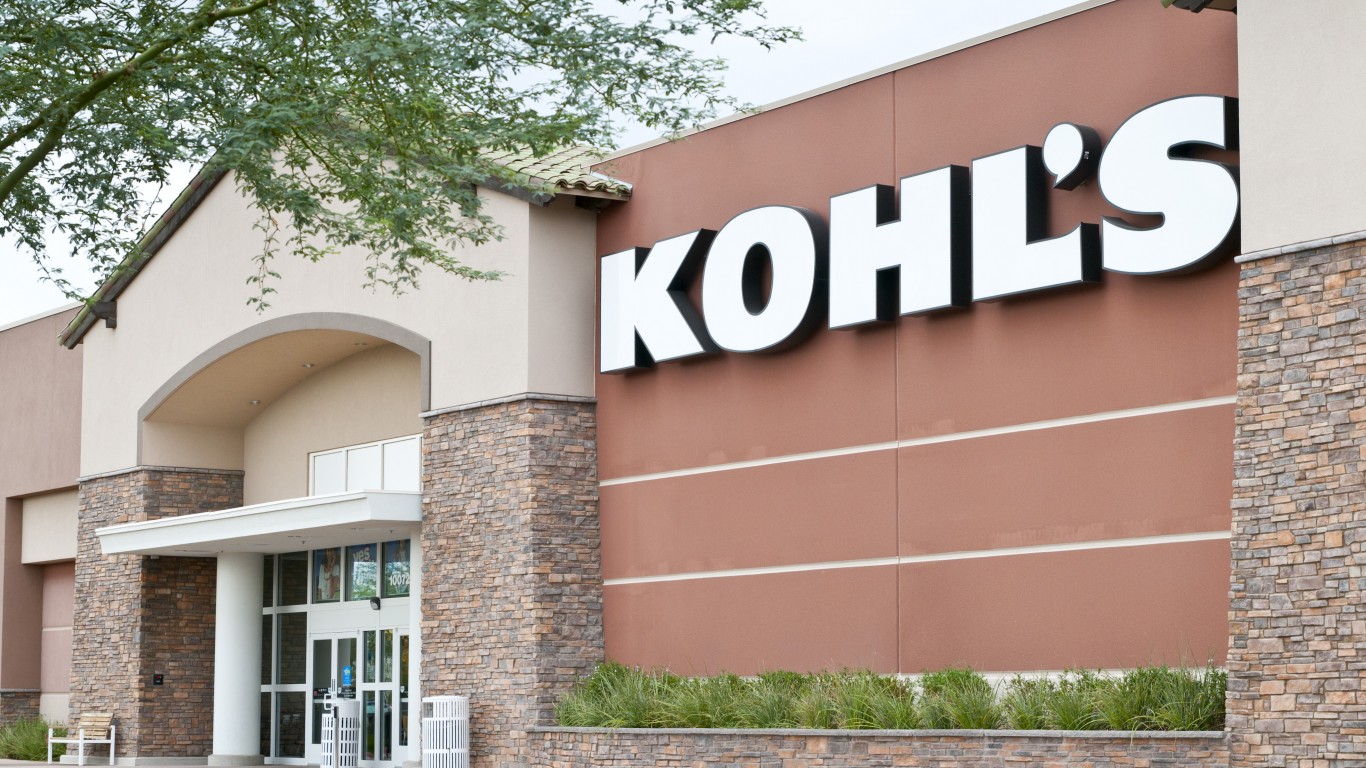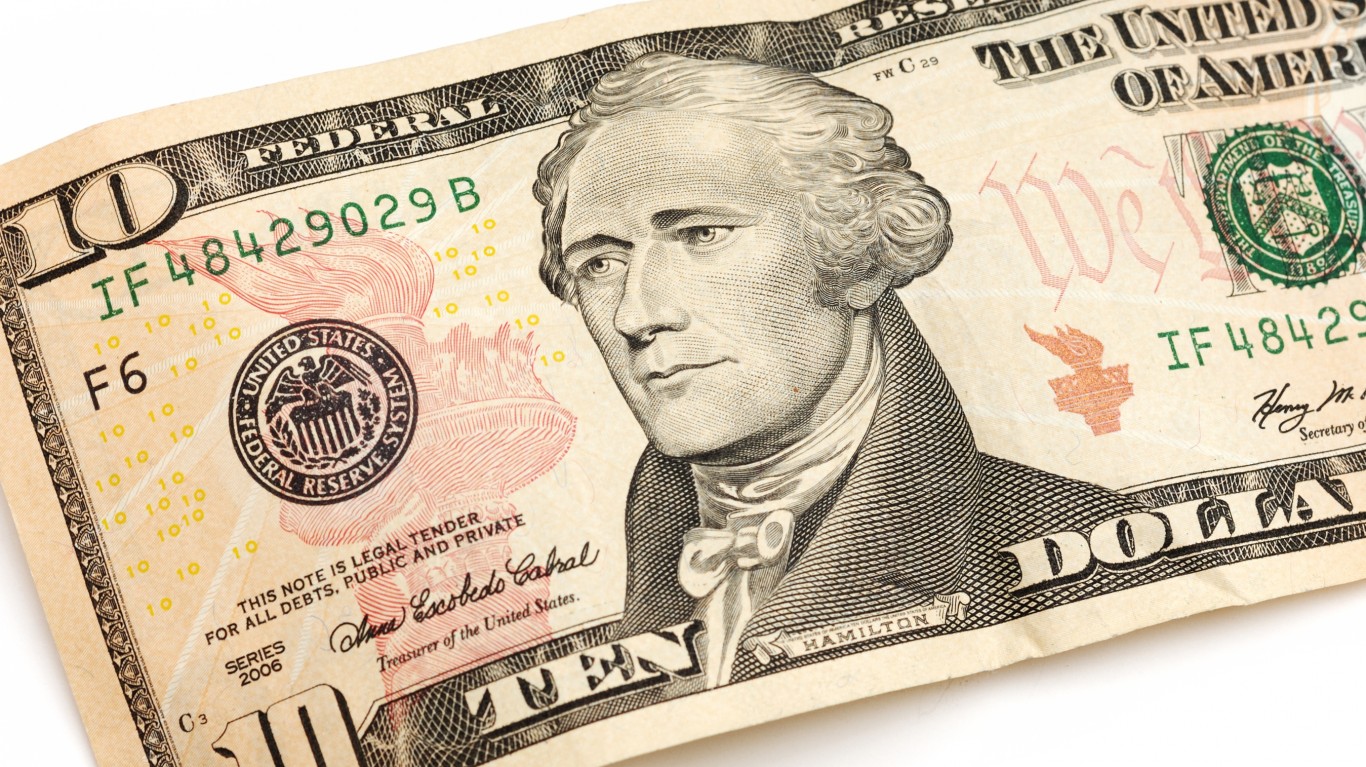

Retail stocks have had a particularly rough six weeks or so since Target announced miserable results with weak guidance and the stock’s price fell 25% in one day. As of Wednesday’s closing bell, Target shares have declined by around 33% since mid-May.
Among the hardest-hit retailers are the four major department store operators: Kohl’s Corp. (NYSE: KSS), Macy’s Inc. (NYSE: M), Nordstrom Inc. (NYSE: JWN) and Dillard’s Inc. (NYSE: DDS). Bank of America Global Research Analyst Lorraine Hutchinson on Thursday downgraded Kohl’s from Neutral to Underperform, bringing the company into line with the other department stores, which already had Underperform ratings.
[in-text-ad]
Hutchinson cut her price objectives on all four by an average of 35%, citing lower sales due to inflation pressures and the “associated gross margin headwind from inventory build-ups.” She goes on:
Department stores were in structural decline pre-pandemic, with sales falling in the years leading up to the pandemic. 2021 was a year of surging revenues from pent-up demand and above-peak margins thanks to lower inventory and higher than planned sales.
Given a BofA forecast for a 40% chance of recession next year, Hutchinson’s price objective changes are based on whether 2021’s pent-up demand growth and pandemic-recovery margins turn out are sustainable and how much a recession will exacerbate those two factors.
Along with the rating downgrade, Hutchinson cut her $50 price objective for Kohl’s to $26, largely due to the company’s rejection of a $53-per-share takeover offer from Franchise Group. With the upside potential of the takeover now gone, Kohl’s commitment to a $500 million accelerated share buyback program carries little weight with investors, or BofA.
Kohl’s said it continues to investigate other strategic options, including selling some of its real estate as a way to deliver shareholder value. So far, Hutchinson is not impressed: “This represents a change in tone to a more flexible stance, but we would view any large leaseback negatively. While unlikely, it would add leverage during a time of decelerating demand and deteriorating margins.”
BofA notes upside potential based on better-than-expected results from the Sephora partnership and the future “possibility of outsized buybacks” if Kohl’s makes a sale-leaseback deal. Despite a temporary boost to the share price, Hutchinson calls such a deal a negative because it adds leverage and threatens quicker margin deterioration due to rent payments.
Kohl’s stock traded up about 2% in the noon hour Thursday at around $27.90. That is nearly $2 above BofA’s new price objective.
BofA cut its price objective on Dillard’s from $215 to $150, which the analysts say is in line with the company’s peers and given BofA’s overall expectation for the group of weak retail sales trends and margin deterioration. Higher-than-expected consumer spending, better inventory control and additional expense cuts are upside risks. On the downside, more investment spending, a slowdown in apparel and accessories sales, continued inventory issues and higher costs weigh on the share price.
Dillard’s stock traded at around $208.50 Thursday, down 1.3%, in a 52-week range of $160.51 to $416.71. That is nearly 40% higher than BofA’s new price objective on the stock.
Hutchinson’s new price objective for Macy’s is $15 a share, down from the prior $22. The company faces tough comparables from the pandemic-recovery levels of last year. BofA notes upside risks including sales initiatives paying off, cost savings and more real estate monetization. On the downside, weaker consumer spending, falling credit income, margin pressure and slower sales growth are causes for concern.
The stock traded up about 2.4% Thursday, at around $18.00, in a 52-week range of $15.68 to $37.95. Thursday’s trading price is about 33% higher than BofA’s price objective.
BofA cut its price objective on Nordstrom from $21 to $15, in line with analysts’ view of the department store peer group. As such, the new target reflects Nordstrom’s weak sales and limited potential for margin expansion. Rising consumer spending and lower investments offer some upside to Hutchinson’s assessment while “severe spending cuts by high-end consumers” or poor execution of Nordstrom’s expansion plans are downside risks.
Nordstrom’s stock traded up about 1.5% in the noon hour Thursday. At around $20.60, it is nearly 30% higher than BofA’s new price objective. The stock’s 52-week range is $18.65 to $38.48.
Take This Retirement Quiz To Get Matched With A Financial Advisor (Sponsored)
Take the quiz below to get matched with a financial advisor today.
Each advisor has been vetted by SmartAsset and is held to a fiduciary standard to act in your best interests.
Here’s how it works:
1. Answer SmartAsset advisor match quiz
2. Review your pre-screened matches at your leisure. Check out the
advisors’ profiles.
3. Speak with advisors at no cost to you. Have an introductory call on the phone or introduction in person and choose whom to work with in the future
Take the retirement quiz right here.
Thank you for reading! Have some feedback for us?
Contact the 24/7 Wall St. editorial team.
 24/7 Wall St.
24/7 Wall St.


